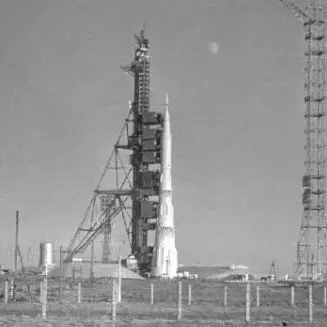7K-LOK n°1 & LK n°3
Launch Failure
Liftoff Time (GMT)
23:15:08
Saturday June 26, 1971
Watch Replay
Official Livestream
Mission Details
Launch Notes
Loss of roll control caused the vehicle to disintegrate at max-Q.
LK n°3
The LK Model was a mass representative of the Soviet LK crewed lunar lander. The LK spacecraft can be subdivided into the lunar landing aggregate ("Lunnyi Posadochnyi Agregat", "LPA") and the lunar ascent vehicle, ("Lunnyi Vzletnyi Apparat", "LVA'"). Propulsion, both for landing and lifting off the Moon was based on the Blok E propulsion system. The Information Display System (spacecraft control panels and controls) version was called Luch.
Trans Lunar Injection
1 Payload
4,983 kilograms
7K-LOK n°1
The 7K-LOK Model was a mass representative of the Soviet 7K-LOK crewed spacecraft for lunar flights. Like the 7K-OK model, the 7K-LOK was divided into three sections, an ellipsoid Orbital Module, the "headlight"-shaped Descent Module, and a cylindrical equipment module. Like the 7K-OK, the 7K-LOK was capable of physically docking with another spacecraft, but lacked the transfer tunnel used on the Apollo (spacecraft), thus forcing the cosmonaut to make a spacewalk from the 7K-LOK's orbital module to the LK Lander using the new Krechet space suit (the predecessor to the Orlan space suits used today on the International Space Station). Another change to the 7K-LOK was the elimination of the solar panels used on the 7K-OK, replacing them with fuel cells similar to those found on the Apollo CSM. Another feature, a "cupola" located on the Orbital Module, allowed the cosmonaut in the 7K-LOK to perform the docking procedure with the LK Lander after lunar liftoff. Only the Descent Module from the 7K-L1, with a thicker, reinforced heatshield, is used on the 7K-LOK and like the 7K-L1, is capable of doing a "skip reentry" so that the Soyuz could be recovered in the Soviet Union. The information display systems (IDS) on the LOK were different from those of the Soyuz-7K. The Descent Module was equipped with the "Uran" control panel and the Orbital Module featured the "Orion" approach control panel.
Trans Lunar Injection
1 Payload
8,428 kilograms
Launch Site
Stats
N-1
3rd
Mission
1st
Mission of 1971
OKB-1
591st
Mission
44th
Mission of 1971
1971
63rd
Orbital launch attempt

